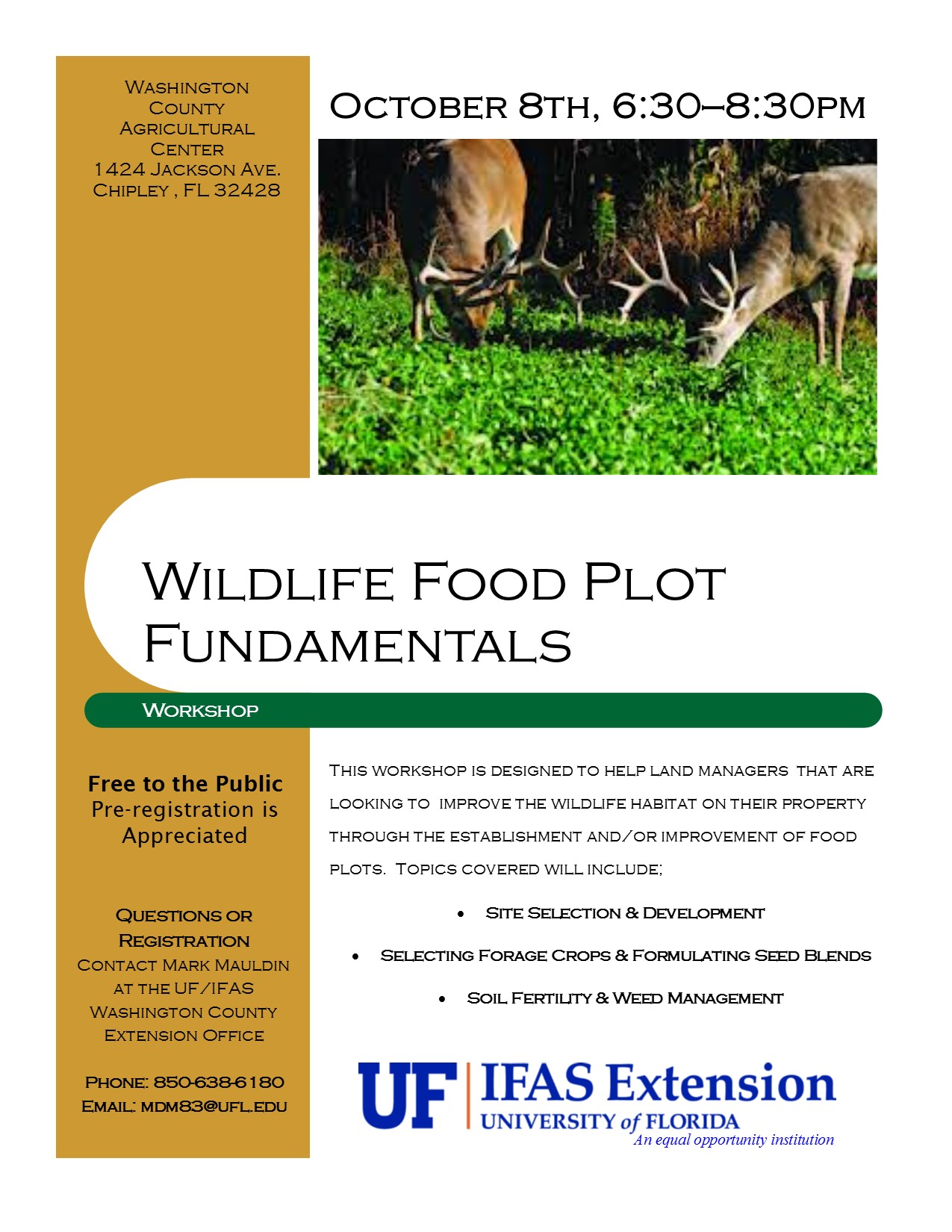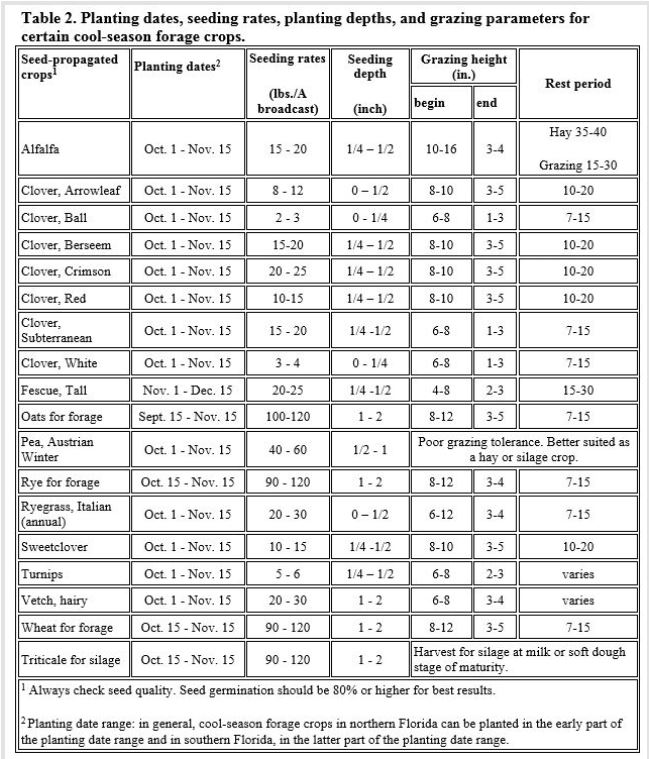
by Mark Mauldin | Aug 18, 2017

White-tailed deer, a species that is both highly sought after by sportsmen and an unwanted nuisance to many. Sportsmen modify habitat to attract deer and homeowners can modify habitat to stop attracting deer.
(Photo by Eric Zamora)
As a County Agent, I receive a wide variety of calls from clients relating to wildlife. The majority of these calls are quite positive; clients need help improving wildlife habitat or simply need a creature identified to satisfy their curiosity. However, from time to time, situations develop where wildlife behavior becomes a nuisance to a client. The following are some key concepts that can be applied to stop ongoing nuisance wildlife and/or lessen the likelihood of future nuisance wildlife causing issues around your home. For clarity, nuisance wildlife are specific animals (not an entire species) that are causing a specific problem.
Animals frequent various areas because those areas provide resources necessary to meet the animals’ needs. Animals have three basic needs: 1) Food 2) Water 3) Cover. If an animal(s) is frequenting your property and causing some kind of damage, as to become a nuisance, it is incredibly likely that the animal’s presence and nuisance behavior are related to the animal seeking food, water, or cover. With this concept in mind, there is a four-step process that can be utilized to alleviate the issue.
Step 1: Identify the species of animal responsible for the nuisance behavior. Accurate identification of the species causing the problem is key to developing a successful plan of action for stopping the issue. Do not make assumptions or guesses, use available resources to make a definitive identification. Animals can generally be identified by looking at the type of damage caused (i.e. soil disturbance, tree bark damage, vegetation clipping, garden damage, etc.), signs left by the animal (scat, tracks, etc.), and the time of day/night the damage occurs. Careful observation of these factors should lead to an accurate identification of the nuisance animal.
Step 2: Determine why the animal is frequenting your property. After you have identified the problem animal and familiarized yourself with its normal behaviors you should be able to deduce what the animal finds appealing about your property. In some cases, the damage caused by the animals plainly shows why they are there, other times it might not be as obvious. Remember, they are likely there in search of food, water, or cover.
Step 3: Implement steps to address the situation. After you have determined “what & why” you can formulate an appropriate plan for addressing the issue. Generally, the plan will include steps in one or more of the following categories:
1) Habitat modification – This is generally the most practical approach to dealing with nuisance wildlife. In its simplest form, habitat modification is simply removing or altering whatever environmental factor is attracting the nuisance wildlife. The most common example of habitat modification is the removal of wildlife food sources (i.e. pet food, bird feeders, easily accessible garbage and/or compost).
2) Deterrents – Any measure that restricts access to the resource desired by the nuisance wildlife. These measures can include, physical barriers (fencing, etc.), hazing or scare tactics (eyespot balloons, holographic foil, motion-sensitive sprinklers, noise-makers, dogs), and chemical repellents. Deterrents are generally more expensive than habitat modification and their effectiveness tends to decrease over time.
3) Trapping or killing the nuisance animal – These are only to be considered as last resorts. Even when trapping or killing is the only option, they generally only provide a temporary solution to the problem if the environmental factor drawing the animals is not also addressed. Additionally, many state and federal regulations that dictate when trapping or killing wildlife is permissible.
Step 4: Evaluate your level of success and make necessary adjustments. Observe any changes in wildlife behavior and modify your approach as necessary. Begin with habitat modification; if that is not effective make sure the correct modification(s) was made. If no additional modification can be made look at deterrents. Only if all habitat modification and deterrent options have proven ineffective would you move on to trapping or killing. As you move through this process you may wish to seek professional assistance. Contact your county’s UF/IFAS Extension Office for general advice or FWC for a list of professional nuisance wildlife trappers.
This article was adapted from Overview of How to Stop Damage Caused by Nuisance Wildlife in Your Yard by Holly K. Ober and Arlo Kane. There are links throughout the article to a series of publications by the same authors that explore the various topics in detail.
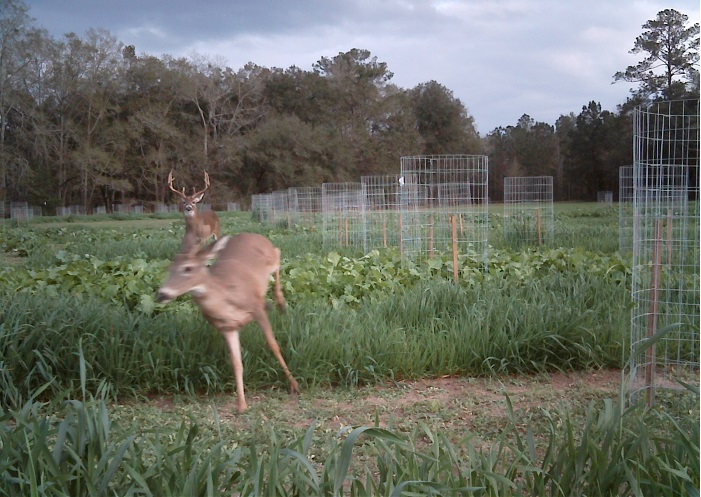
by Mark Mauldin | Nov 7, 2016

A buck chases a doe through plots of wildlife forages being evaluated in 2013 at the University of Florida’s North Florida Research and Education Center. Photo Courtesy of Holly Ober
It should be too late in the year for an article about cool season food plots; they should already be up and growing, at the very least planted. It’s November, archery season has begun, the fall food plot ship should have already sailed. However, due to the incredibly dry weather we’ve had for the past several months I hope that ship hasn’t sailed. I hope you have not planted your food plots yet. The tristate area is dry, too dry to plant anything you expect to survive. If you have not already planted, don’t until your area gets substantial rain.
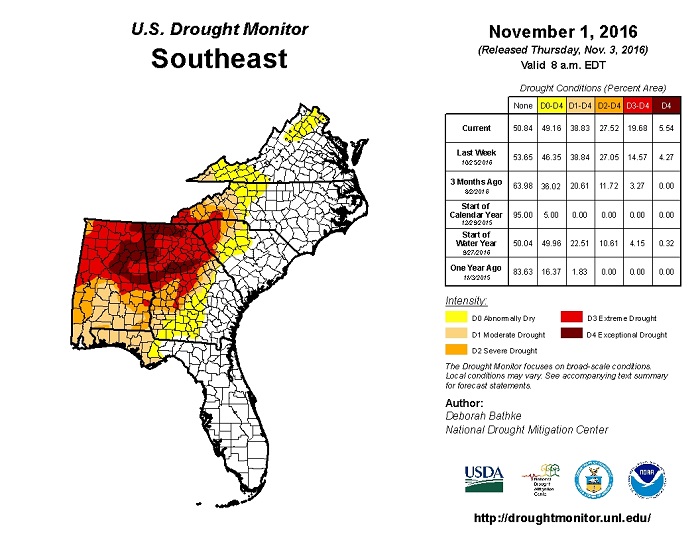
Very dry conditions persist across the Southeast.
The saying goes “The best time to go hunting is whenever I have time”. As the classic weekend-warrior sportsman myself, I can easily relate to that saying and I can also understand how/why folks would apply that same logic to planting food plots. Unfortunately, with this fall’s weather that logic does not hold true. Any plantings made before we have adequate moisture run a very high chance of being complete failures.
These likely failures can playout in a variety of ways but they all end the same. Seedlings have tiny roots systems, moisture must be accessible very near the soil surface in order for them to access it. If moisture is unavailable in the tiny root zone the seedlings will wilt. Wilting greatly diminishes the plants ability to carry out photosynthesis; no photosynthesis no energy. Seedlings have virtually no stored energy to fall back on, so the seedlings begin to die rapidly.
Admittedly, I left out one key detail in the plant horror story above; moisture is required for seed germination. If it is dry enough seeds can be planted and nothing will happen – they won’t germinate, they won’t try to grow, they won’t die from lack of moisture. This fact leads some to conclude, “Plant now and it will come up whenever it rains”. While there is some sound logic in that conclusion, it is a very risky plan when you consider the types of plants we typically include in our wildlife plots. “Dusting in” as it is called in the crop world, can work with larger seeded, deeper planted crops. It is not well suited to small seeded, very shallow planted forages like clover. When a seed is right at the soil surface the tiniest amount of rain or even a heavy dew could provide enough moisture for germination which would likely start the process I described earlier.
The safest bet is to wait until your area has received a good soaking rain and there is a favorable chance for additional rains. As dry as we are now, that first ½ inch shower will not provide adequate moisture for establishment if it is followed by an extended period without additional rain.
Sooner or later it will rain (I think), so you wind up planting your plots later than normal. What does that mean? In the grand scheme of things, not much. As we get later in the year the days get shorter and the air and soil temperatures get lower which can slow the development of the plants. That said, the real growth for most of our cool season forages really occurs in the spring and that will still be that case regardless of if you planted in October, November or December. Remember the goal of food plots should be increasing the quality and quantity of forage available for wildlife throughout the entire year.
The dry weather has messed up food plot establishment as it relates to hunting season but if all you wanted was a game attractant for hunting purposes food plots were probably not your best bet in the first place. It takes considerable time, effort and expense to maintain quality food plots, to the point that they are really not a very practical option if only viewed as an attractant for a few months out of the year.

If attracting deer, not improving habitat, is your primary goal you might consider establishing a feeding station. Be sure to check FWC regulations before you begin feeding game animals.
Be patient, wait for the weather conditions to improve before planting. There is no point in wasting your time and money on plantings that have a very low chance of being successful. Contact your county’s agriculture or natural resources agent for more details relating to the establishment of wildlife plots.
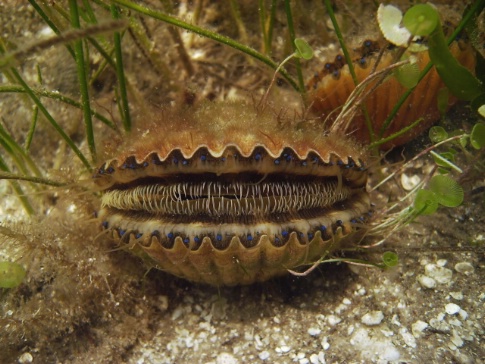
by Mark Mauldin | Jul 1, 2016

Bay Scallop Argopecten iradians
http://myfwc.com/fishing/saltwater/recreational/bay-scallops/
If you had plans to go scalloping in St. Joseph Bay over the long holiday weekend I’m afraid you are going to be disappointed. FWC has postponed the opening day of scallop harvesting season in St. Joseph Bay until August 22.
The postponement, along with other conservation efforts, is intended to provide the scallop population in St. Joseph Bay additional time to recover from the effects of the Red Tide event we experienced last fall. Scallop season in St. Joseph Bay will start later, end earlier, and have tighter bag limits than the rest of the Bay Scallop Harvest Zone – “the Pasco-Hernando County line (near Aripeka – latitude 28 degrees, 26.016 minutes North) to the west bank of the Mexico Beach Canal in Bay County (longitude 85 degrees, 25.84 minutes West)”(FWC). Below are several figures regarding the 2016 Bay Scallop season in St. Joseph Bay. All of the figures are courtesy of FWC.
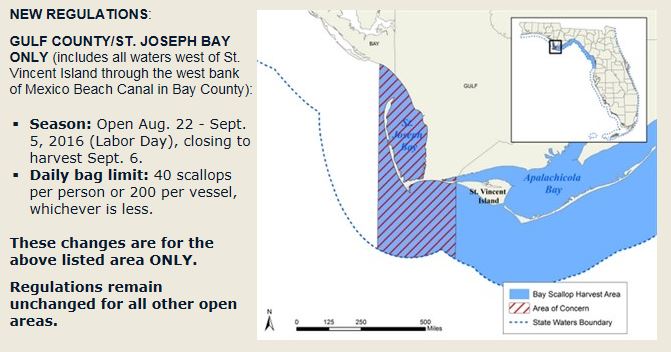
http://myfwc.com/fishing/saltwater/recreational/bay-scallops/
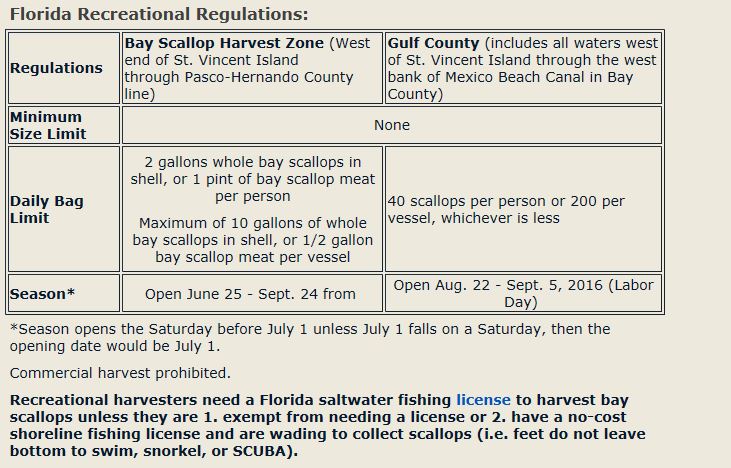
http://myfwc.com/fishing/saltwater/recreational/bay-scallops/

http://myfwc.com/fishing/saltwater/recreational/bay-scallops/
Here’s the bright side, even with scalloping on hold for a while, here in NW Florida we have tons of other opportunities for fun on the water. If you were ready to go scalloping then you likely already have a saltwater fishing license, a boat, and a family that is ready to go have fun. You can still put all of these to good use – go fishing.
One of the most attractive aspects of scalloping is that it is, quite frankly, easy. It’s fun for the whole family, even those with shorter attention spans. Fishing can be easy too, if you target the right species. When looking to entertain the family don’t think about trying to catch the trophy that will be the envy off all your friends, think about fish that are easy to find and eager to bite. The following are a few species to target that I think fit this scenario nicely.
Sand Perch – If you are dealing with anglers that are very inexperienced and casting is an issue Sand Perch are an excellent option. They prefer deeper bay waters with sandy bottoms. The deeper water allows for bait to be dropped vertically, no casting necessary. ½ of a live shrimp on a #2 or 1/0 hook with enough weight to get to the bottom, is all you need. These little guys bite very aggressively and generally when you find one there will be many more in the area. If you want fish for supper, Sand Perch taste very good but the smaller ones have very little meat.
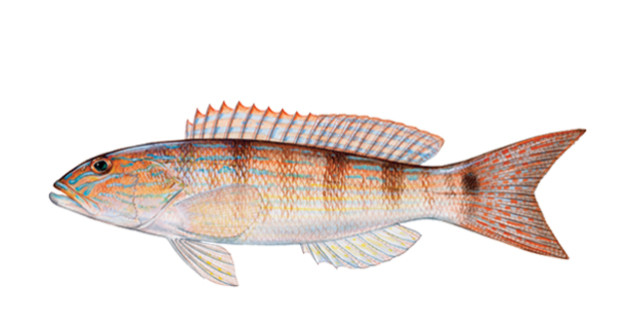
Sand Perch – Diplectrum formosum http://floridasportfishing.com/sand-perch/
Ladyfish – The “poor man’s tarpon” is often found over the same flats where you would go to find scallops but likely in slightly deeper water. These acrobatic fish will readily eat a wide variety of offerings, anything resembling a shrimp or bait fish (live or artificial), as long as it is moving up in the water column, not lying on the bottom. Ladyfish generally travel in schools and put on quite a show when hooked. Unfortunately, they are generally considered unfit to eat and they have a nasty habit of defecating when they are lifted from the water. (When I hook one I generally fight it to the boat, then give it some slack line which it will use to sling the hook from its mouth, thereby avoiding having to lift the fish from the water and the subsequent mess.) Mess aside, these fish are really a lot of fun to catch.
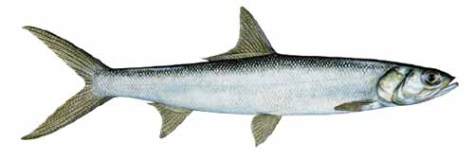
Ladyfish – Elops saurus
http://www.captivafishing.net/?p=772
Spotted Sea Trout – A game species that is highly regarded throughout the coastal waters of Florida that is almost two fish in one. Big, “gator” trout are widely sought by anglers and can be very difficult to catch; that’s not the fish we’re after here. Juvenile trout are much easier to catch than their more mature counterparts. A live or artificial shrimp drifted under a cork over seagrass beds is a simple but very effective recipe for catching trout. Most “serious” anglers will leave an area when they start to catch “shorts”, that’s exactly where you want to be for lots of fast paced action. Just because they are small doesn’t mean they are not fun to catch. A couple of things to remember with trout; 1) they are a regulated species so make sure you know the rules if you are planning on keeping fish, 2) they are fairly fragile fish and should be handled gently with wet hands and returned to the water quickly. Visit catchandrelease.org for additional fish handling tips.
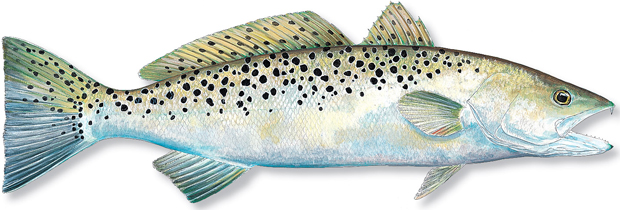
Spotted Sea Trout – Cynoscion nebulosus
http://www.floridasportsman.com/sportfish/seatrout/
There are many other species that I could have mentioned; catfish, bluefish, blue runners, and even pin fish can all help make for a day on the water fun for the whole family. It’s all about mindset, look for lots bites and bent poles not trophies. Don’t let the delay of scallop season delay your family’s fun on the water this summer – go fishing.
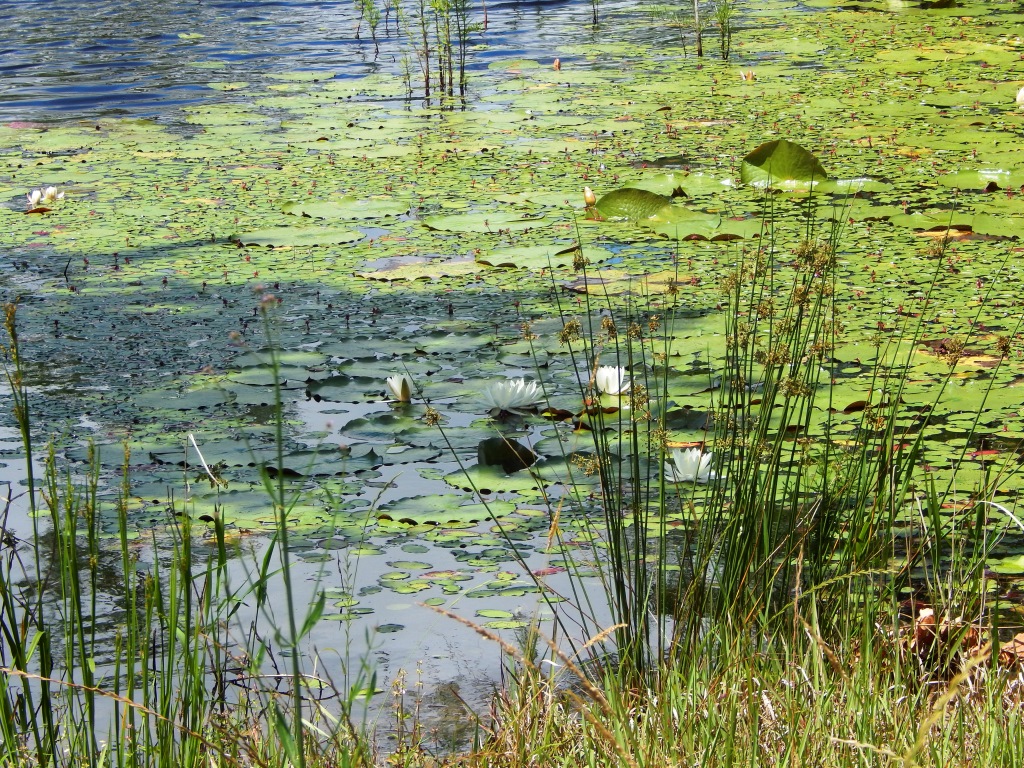
by Mark Mauldin | May 22, 2016
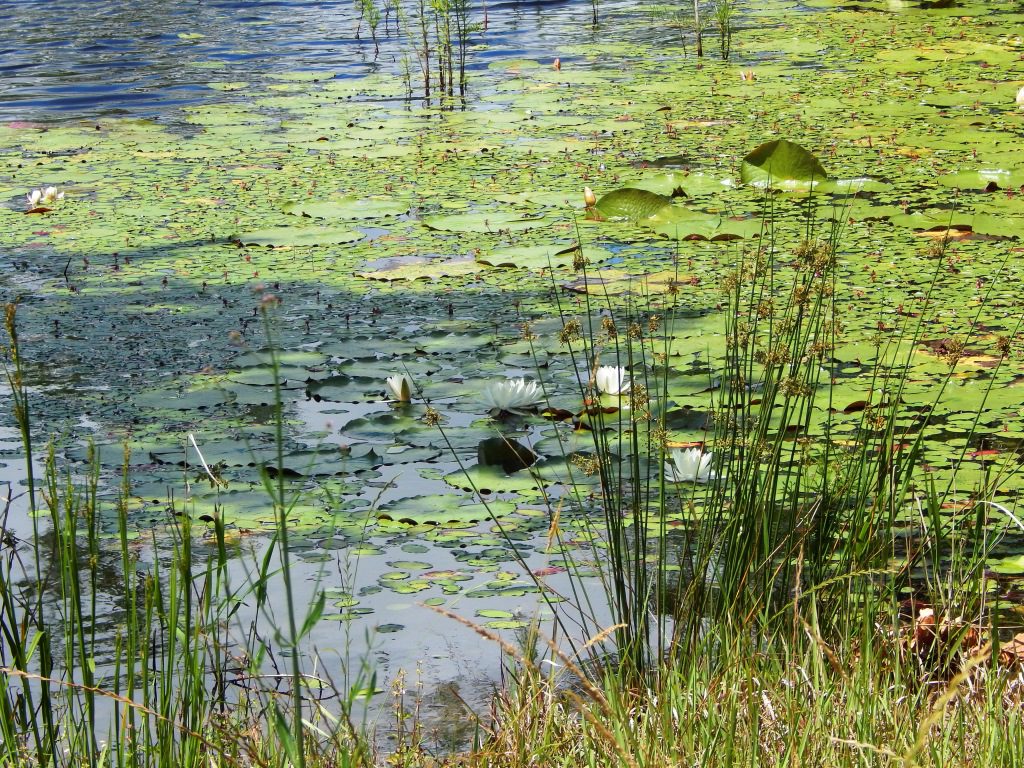
Managing a pond can be both rewarding and challenging.
Photo Credit: Mark Mauldin
Ponds can be a source of great enjoyment. However, properly managing them to meet your desired goals can be challenging. Panhandle Pond Management, a two part series being offered by UF/IFAS Extension, is designed to help pond owners/managers become more successful in reaching their goals. Specialists from campus will be onsite to share their expertise. Dr. Chuck Cichra, UF Fisheries and Aquatic Sciences, will lead session 1 and Dr. Stephen Enloe, UF Center for Aquatic and Invasive Plants, will lead session 2.
Session 1 – May 31st Fish Management will focus on decisions that the pond owner can make that directly relate to the success and productivity of the fish population in a pond. Stocking, harvesting, feeding, aeration and other topics will be covered.
Session 2 – June 7th Aquatic Weed Management will involve weed identification, control options, and herbicide application techniques. If you have problem weeds bring samples for identification and control recommendations.
Panhandle Pond Management will be held at the Washington County Agricultural Center, 1424 Jackson Ave, Chipley FL. Each session will begin at 6:00pm; a meal will be served. To ensure we have enough food advanced registration is strongly encouraged. There is a $10 registration fee per session. To register call the Washington County Extension Office (850-638-6180) or use the links below for online registration. Session 2 attendees will receive a copy of Weed Control in Ponds a bound book sold through the IFAS bookstore.
Online Registration
Session 1 – https://goo.gl/Rwn9dk
Session 2 – https://goo.gl/zj58o6
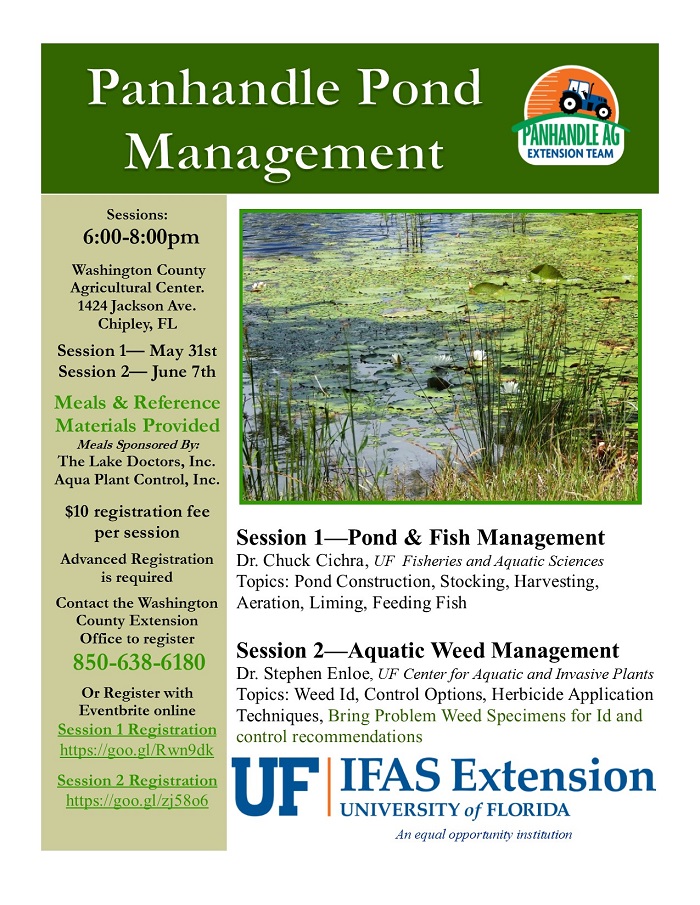
by Mark Mauldin | Oct 1, 2015
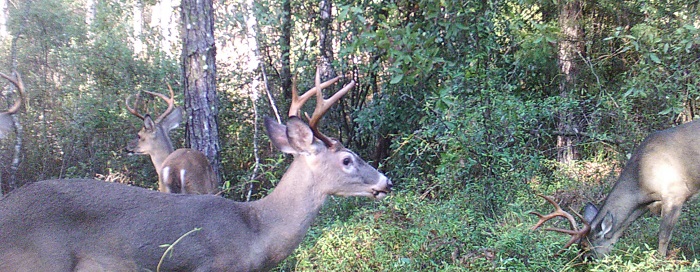
As summer browse dwindles the habitat improvement associate with wildlife food plots becomes even more evident.
Photo Credit: Mark Mauldin
Improving habitat can benefit the quantity and quality of wildlife on a piece of property. One common method for improving habitat is the establishment of food plots. Food plots are simply areas that are managed for the production of forages that help meet the nutritional requirements of the desired wildlife species.
The implementation of food plots has gained popularity largely through its association with hunting, specifically white-tailed deer hunting. Food plot establishment and hunting success can be directly related; attracting game to a specific area via the establishment of a highly desirable plant species. That said, rarely are food plots which are planned and utilized only as attractants very successful. Truly successful food plots are developed with yearlong habitat improvement in mind; improved hunting on the property is a by-product of the improvement in habitat.
Successful implementation of wildlife food plots takes planning and consideration. Many factors must be considered;
- Site selection: Factors like size, shape, soil characteristics, and location can greatly affect the potential success of a food plot.
- Nutritional demands of wildlife: Throughout the course of the year the nutritional demands of wildlife change. Wildlife, especially deer, will show preferences for different plants at different times of the year based largely on the nutritive value of the plant. Successful food plots seasonally match the nutrition offered to the nutrition need by the wildlife.
- Plant selection: Selecting the best species and varieties to plant in a food plot is a decision that tends to get a lot of attention, and rightfully so. Plantings should be selected based on how well they are adapted to the site, propensity of wildlife to utilize them, and how well they fit into the yearlong rotation. It is always advisable to plant a blend of multiple species, planting windows and persistence of the plants must be considered when formulating these blends.
- Agronomic practices: If all other factors are considered and appropriately addressed the success of a food plot is still dependent on the ability of the land manager to effectively plant and manage the crop(s). Soil fertility, weed control, planting depth, seeding rate, etc. all need to be correctly addressed to have a successful food plot.
Planning and hard work are prerequisites for successful food plots but when everything comes together seeing the benefits they provide can be a truly rewarding experience. If you are interested in learning more about successfully improving wildlife habitat through the implementation of food plots please consider attending Wildlife Food Plot Fundamentals. This workshop will be at the Washington County Agricultural Center on Thursday October 8th beginning at 6:30pm. Please see the flyer for more details, for questions or to register contact Mark Mauldin with UF/IFAS Extension, Washington County (850-638-6180, mdm83@ufl.edu).
